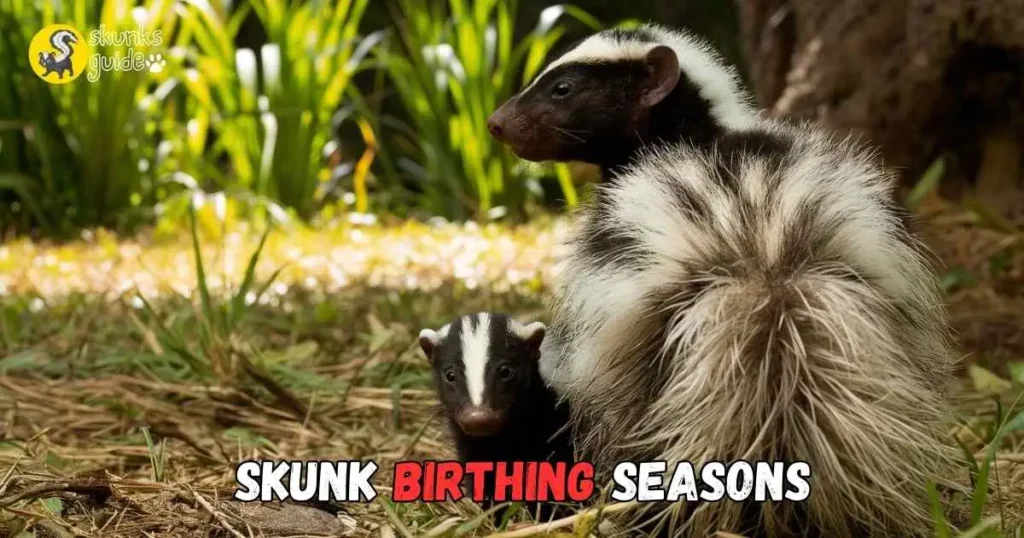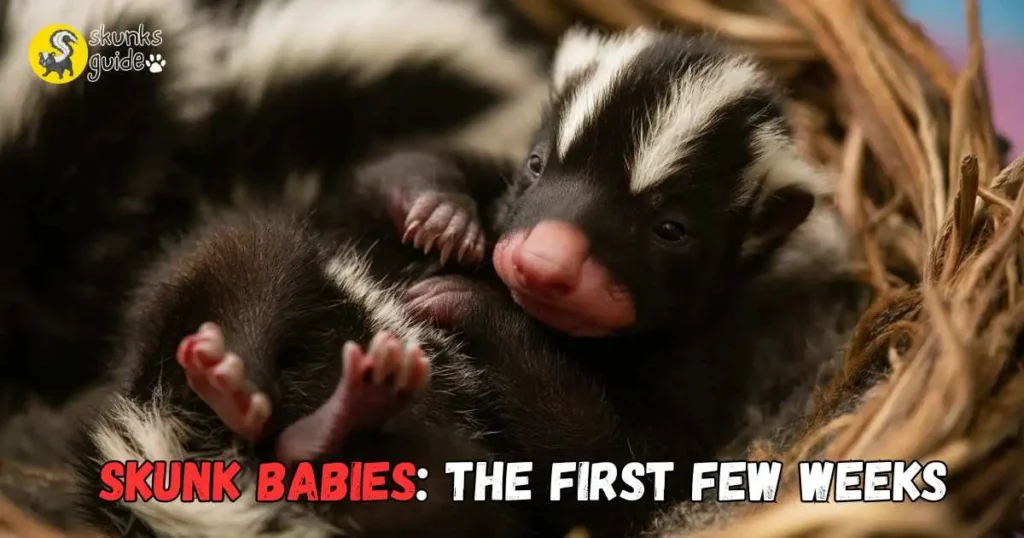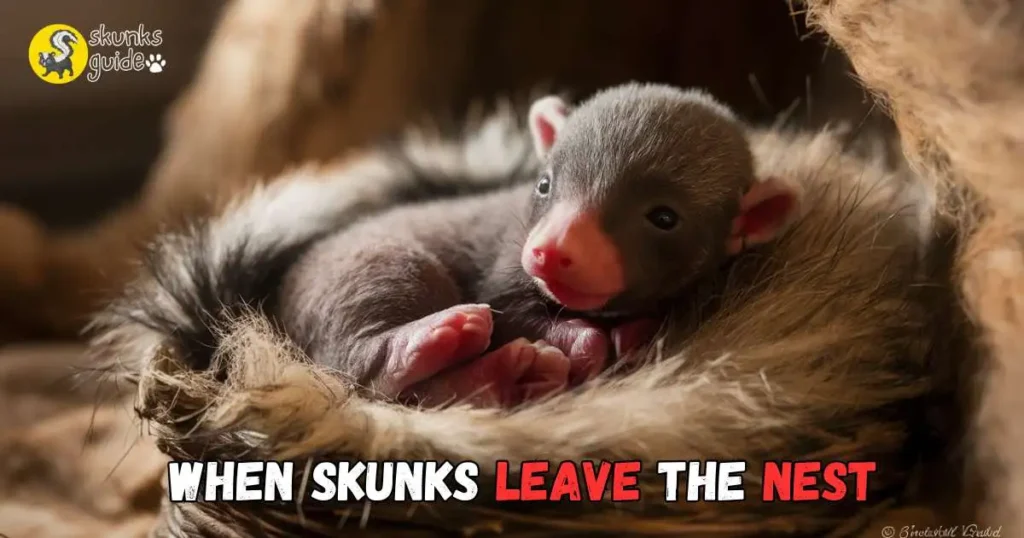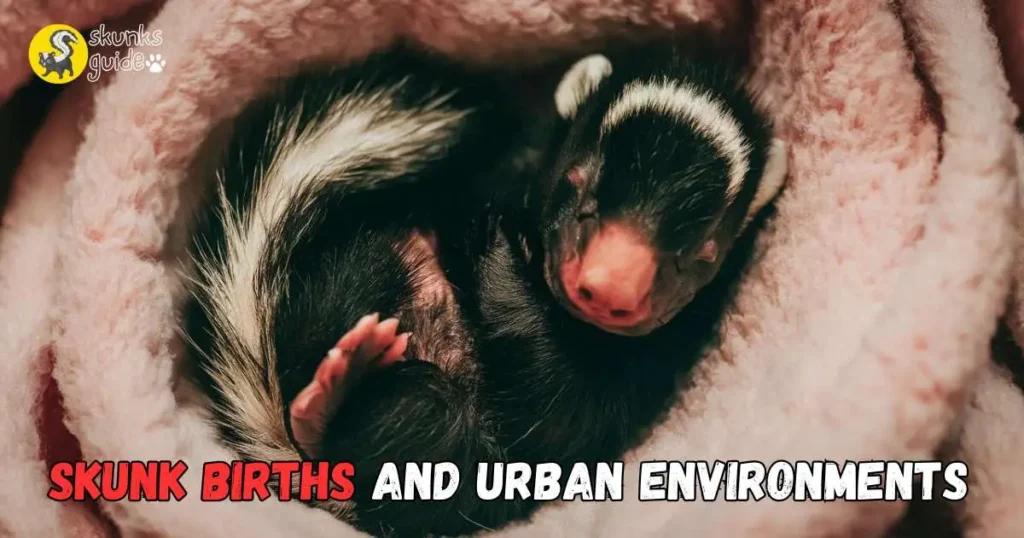What Time of Year Do Skunks Have Babies?
Skunks have their babies in the spring, usually from late March to early June. As someone who has spent time researching skunk behavior, I’ve found this season gives baby skunks the chance to grow big and strong before winter. Want to know more about how skunks care for their babies and why spring is the perfect time for their birth? Keep reading to learn about the amazing ways skunks raise their families!
Introduction To Skunk Reproduction
Skunks are fascinating creatures with unique reproductive habits. Understanding their breeding patterns helps us learn more about these animals. Skunks typically have a specific time of year for mating and raising their young.
Skunk Mating Habits
Skunks are generally solitary animals. They come together only during the breeding season. This season typically occurs in late winter to early spring.
- Mating often begins around February.
- Females attract males using scents.
- Once mated, skunks may stay together for a short time.
The female skunk has a unique reproductive cycle. After mating, she undergoes a gestation period lasting about 60 to 75 days. This means baby skunks, called kits, usually arrive in late spring.
Factors Influencing Skunk Breeding
Several factors affect skunk reproduction. These include environmental conditions and food availability.
| Factor | Influence |
|---|---|
| Temperature | Warmer weather encourages mating. |
| Food Supply | Adequate food leads to healthier offspring. |
| Habitat | Safe environments attract more skunks for breeding. |
Social behaviors also play a role. Stronger males often win mating rights. Healthy females are more likely to reproduce successfully.
Skunk Birthing Seasons
Understanding skunk birthing seasons helps in appreciating these unique creatures. Skunks typically have specific times when they give birth. Knowing these times can aid in wildlife observation and conservation efforts.

Peak Times For Skunk Births
Skunks usually mate in late winter to early spring. The peak birthing season occurs from late April to June. Most skunk babies, called kits, are born in May.
- January – February: Mating season begins.
- March: The gestation period starts.
- April – June: Most births occur.
Regional Variations In Skunk Birthing Seasons
Skunk birthing seasons can vary by region. Different climates and environments affect these times. Here’s a breakdown of skunk birthing seasons by region:
| Region | Birthing Season |
|---|---|
| North America (Northern states) | May to June |
| North America (Southern states) | April to May |
| Western U.S. | Late April to June |
| Eastern U.S. | Late April to June |
Understanding these variations helps in wildlife management. Observers can plan better to witness skunk births. Each region has its unique timing influenced by local conditions.
Gestation And Litter Size
Understanding skunk reproduction helps us appreciate these unique animals. Knowing the duration of skunk pregnancy and their litter size can shed light on their life cycle. Skunks typically breed in spring, resulting in new life by late spring or early summer.
Duration Of Skunk Pregnancy
The gestation period for skunks lasts about 60 to 75 days. This time varies slightly between different skunk species. Female skunks prepare a den for their young during this period. They seek safe, hidden places to give birth.
| Skunk Species | Gestation Period (Days) |
|---|---|
| Striped Skunk | 60-75 |
| Hooded Skunk | 60-75 |
| Spotted Skunk | 60-75 |
Average Litter Size For Skunks
The average litter size for skunks ranges from 3 to 10 kits. A few factors influence this number:
- Species type
- Health of the mother
- Environmental conditions
Newborn skunks are small and blind. They depend on their mother for warmth and food. Skunk mothers are very protective of their young.
As the kits grow, they start to explore their surroundings. They learn essential survival skills from their mother. By late summer, they are ready to venture out on their own.
Skunk Babies: The First Few Weeks
Skunk babies lives are born during the spring. They are tiny and helpless at first. Understanding their early weeks helps us appreciate their growth. Let’s explore their developmental milestones and the important role of the mother skunk.

Developmental Milestones
In the first few weeks, skunk babies experience rapid changes. Here’s what to expect:
| Age (Weeks) | Milestone |
|---|---|
| 1 | Eyes and ears closed; rely on mother. |
| 2 | Eyes begin to open; start to hear sounds. |
| 3 | Begin to crawl; explore their surroundings. |
| 4 | Start eating solid food; playful behavior. |
| 5 | Fully weaned; more adventurous and curious. |
These milestones mark important stages in their development. Each week brings new skills and experiences.
Mother Skunk’s Role In Early Life
The mother skunk plays a vital role in her babies’ lives. She provides:
- Warmth: Keeps them safe and cozy.
- Food: Feeds them with rich milk.
- Protection: Stays close to guard against dangers.
She teaches them essential survival skills. This includes hunting and recognizing threats. The bond between mother and babies is strong.
By the end of the first few weeks, skunk babies are more independent. They start to mimic their mother’s actions. This prepares them for life outside the den.
Caring For Skunk Kits
Caring for skunk kits is essential for their survival. These young skunks rely on their mothers for food and protection. Understanding their needs can help ensure they thrive.
Diet And Feeding Patterns
Skunk kits have specific dietary needs as they grow. Here’s a quick overview of their diet:
| Age of Skunk Kits | Diet | Feeding Frequency |
| 0-4 weeks | Mother’s milk | Every 2-3 hours |
| 4-8 weeks | Soft foods (like baby food) | 4-5 times a day |
| 8-12 weeks | Solid foods (fruits, insects, and meat) | 3 times a day |
Mother skunks gradually introduce solid foods. This helps kits develop strong digestive systems.
Protective Behaviors Of Parent Skunks
Parent skunks show strong protective behaviors. Here are some key actions:
- Denning: They create safe dens for their kits.
- Vocalizations: Mothers use sounds to alert kits of danger.
- Defensive Posture: They stand tall to scare off threats.
- Close Supervision: Mothers keep a watchful eye on their young.
These behaviors ensure the safety and well-being of skunk kits. Mother skunks are nurturing and protective.
When Skunks Leave The Nest
After a few weeks, skunk babies grow strong. They become curious and ready to explore the world outside. Understanding when they leave the nest helps you appreciate their journey.

Age Of Independence
Skunk babies usually leave the nest around 8 to 10 weeks old. At this age, they:
- Start eating solid food.
- Begin to learn survival skills.
- Grow fur and become more active.
Independence is essential for young skunks. They learn to find food and avoid danger. This stage is crucial for their growth.
The Dispersal Of Young Skunks
Once they reach independence, young skunks begin to disperse. They leave their home range to find new territories. This movement usually happens in late summer to early fall. During this period, you may notice:
| Age (Weeks) | Behavior |
|---|---|
| 8-10 | Leave nest and explore |
| 10-12 | Start foraging for food |
| 12+ | Establish own territory |
Young skunks often travel alone. They learn to fend for themselves. This journey is vital for their survival. Each skunk finds its own place in the wild.
Skunk Births And Urban Environments
Skunks often adapt to urban settings. Their birthing season brings unique challenges. The arrival of baby skunks can lead to unexpected human encounters. Understanding these interactions helps create a peaceful coexistence.

Skunks In Suburban And Urban Settings
Skunks thrive in suburban and urban areas. They find food, shelter, and safety. These environments provide:
- Abundant food sources
- Numerous hiding spots
- Fewer natural predators
During spring, female skunks seek sheltered places to give birth. Common nesting sites include:
- Under decks
- In garages
- In sheds or basements
People may not realize skunks are nearby. This leads to surprising encounters. Skunk mothers are protective of their young. They may spray if they feel threatened.
Mitigating Conflicts During Skunk Birthing Season
Preventing conflicts during skunk birthing season is essential. Here are some effective strategies:
| Action | Description |
|---|---|
| Secure Garbage | Use skunk-proof bins to avoid attracting them. |
| Seal Entrances | Block access to potential nesting sites. |
| Educate Neighbors | Share tips for living peacefully with skunks. |
| Observe from Afar | Watch skunks without getting too close. |
Respect the space of skunks and their young. Avoid disturbing nests. Understanding skunk behavior helps reduce conflicts. Enjoy observing these fascinating creatures from a safe distance.
Conservation And Protection
Protecting skunks is vital for maintaining our ecosystem. These creatures contribute to pest control and soil health. Understanding the threats they face helps us protect them better.
Threats To Skunk Populations
Skunk populations face several serious threats:
- Habitat Loss: Urban development destroys their homes.
- Road Mortality: Many skunks die on roads.
- Climate Change: Alters their food sources and habitats.
- Pollution: Contaminates their environment, affecting health.
- Overhunting: Some people hunt skunks for their fur.
Efforts To Protect Skunk Habitats
Various organizations work to protect skunks and their habitats:
| Organization | Efforts |
|---|---|
| Wildlife Conservation Society | Restores habitats and conducts research. |
| National Park Service | Protects natural habitats and reduces road risks. |
| Local Wildlife Agencies | Educate the public on skunk safety. |
Community efforts also play a significant role:
- Plant native trees and shrubs.
- Create wildlife corridors to connect habitats.
- Reduce pesticide use in gardens.
- Participate in local conservation programs.
Every action counts. Protecting skunks ensures a balanced ecosystem.
Frequently Asked Questions
Do Skunks Return To The Same Place Every Year?
Skunks often return to the same den or area yearly. They seek familiar shelter for breeding and raising young. Habitat stability influences their behavior, making them likely to reuse previous locations. Removing attractants can help discourage their return to your property.
How Long Does A Mother Skunk Stay With Her Baby?
A mother skunk typically stays with her babies for about 8 to 10 weeks. During this time, she nurses and teaches them essential survival skills. After this period, the young skunks start to explore independently but may still remain near their mother for safety.
What Time Of Year Do Skunks Nest?
Skunks typically nest in late winter to early spring. They seek shelter in burrows or under structures. This nesting period lasts until summer when they care for their young. Knowing their nesting habits helps in understanding their behavior and managing potential human-wildlife interactions.
Conclusion
Understanding the timing of skunk births helps in wildlife management and awareness. Skunks typically have babies in spring, usually between March and June. By knowing their breeding season, you can take steps to minimize conflicts with these creatures. Respecting their natural cycle promotes harmony between humans and wildlife.

